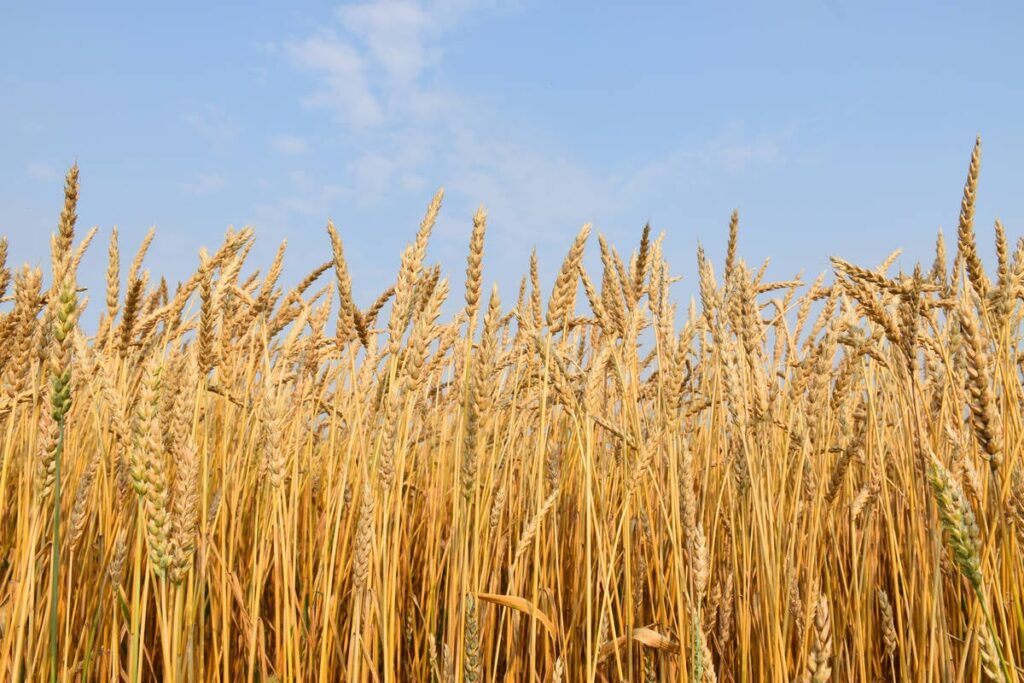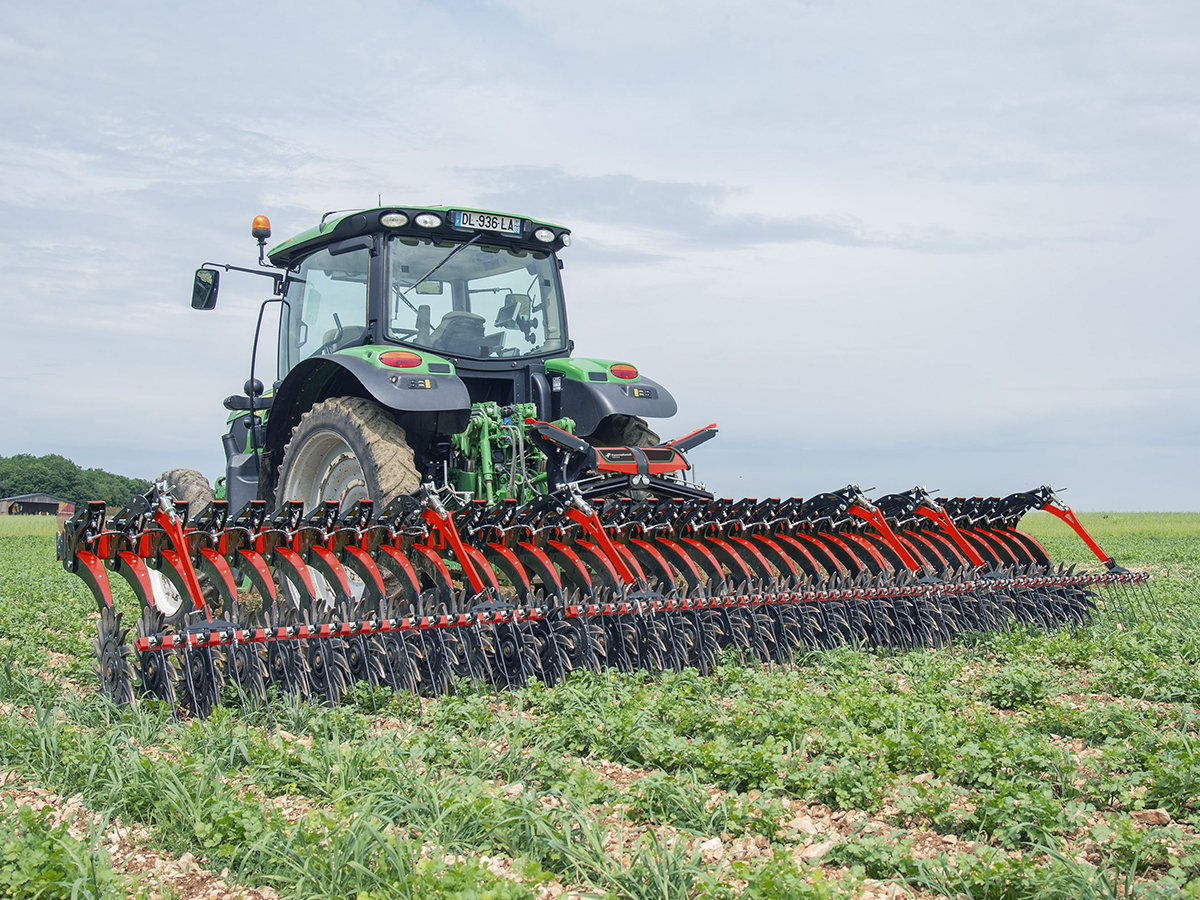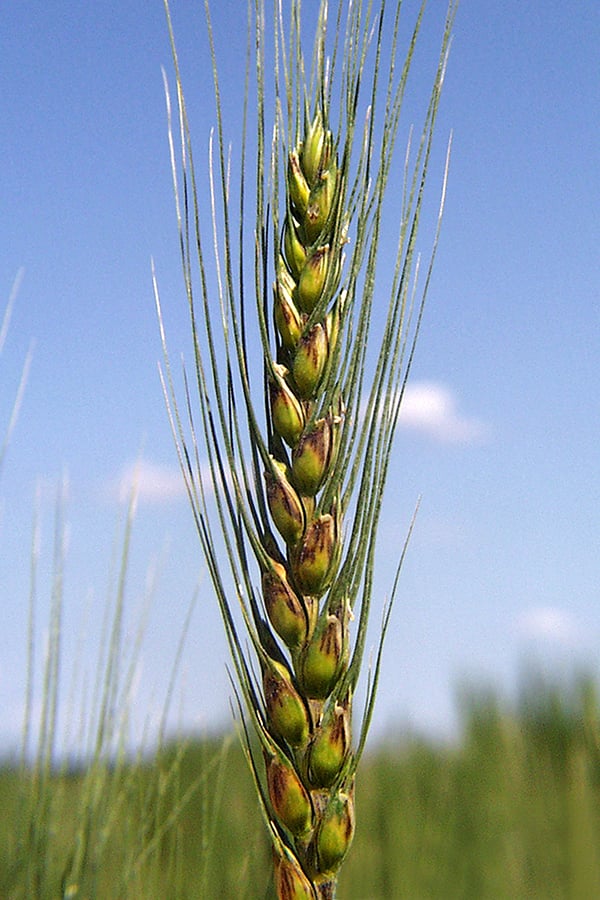Fungicide, glyphosate don’t hurt your hard red wheat quality

A study has found two of the most common practices in Prairie wheat production — fungicide for fusarium head blight and pre-harvest glyphosate — don’t affect grain quality.
Rather, it’s weather, and your wheat variety, that will make the biggest difference.
The research was led by Katherine Dorian, then a master’s student at the University of Manitoba, with support from a multidisciplinary team that included cereal chemist Harry Sapirstein and agrometeorologist Paul Bullock.
Read Also


Inter-row cultivation helps organic crops
Two organic producers at the recent Advancing Organics conference in Saskatoon said inter-row cultivators are worth the expense, noting considerable benefits with their use.
Dorian’s work was part of a broader investigation into factors that affect hard red spring wheat (HRSW) quality across the Prairies — but this specific study focused on how glyphosate and fungicide applications stack up against genotype and environment when it comes to grain quality.
“We wanted to know if these common management practices actually influence grain quality, and if so, how much,” says Bullock, who served as Dorian’s thesis advisor. “This study gave us a chance to look at that in a rigorous, replicated way.”
From 2015 to 2017, the team ran trials at four sites: Lethbridge in Alberta, Indian Head in Saskatchewan, and Carberry and St. Adolphe in Manitoba. Six wheat varieties were selected to represent a range of gluten strengths, and at each site, plots were treated with fungicide at flowering, glyphosate at harvest, both, or neither.


These varieties were grown side by side, allowing researchers to directly compare the effects on protein content, test weight, gluten strength and other measures of wheat quality. The study did not look at yield.
Common crop protection applications don’t affect quality
Across the board, neither fungicide nor glyphosate showed a meaningful effect on quality.
“The good news is that when you look at those treatments, for both the fungicide and the glyphosate, it’s really almost a nil result,” Bullock says. “There was nothing where the size of the impact was large enough to be practically significant.”
The results weren’t overly surprising: everyone expected weather and genotype to be the most impactful factors contributing to wheat quality. But the research hadn’t been done before, and Bullock points out that results could have been much worse news.
“If we had, for example, found if you put pre-harvest glyphosate on your wheat and the gluten strength drops — that would’ve been horrific,” he says. “We didn’t find that.”
Instead, for all of those grain properties — the grade, the protein levels, the test weights — either weather or variety had a much larger impact on the variation of the quality than any of those treatments did. In other words, it’s good news that they are not making things worse.
Varieties
Among the varieties tested, there was no clear winner. Some, such as Stanley, produced higher protein, while others, like Glenn, showed stronger gluten strength. But the study wasn’t about assessing varieties — only whether variety selection affected quality. And it did affect quality, but mostly in the way breeders intended.
Bullock also notes the study was started 10 years ago and some of the varieties are no longer being used. One variety, Harvest, was included specifically because it was known to have weaker gluten. Not long after the study, Harvest was delisted from the Canada Western Red Spring class.
Only apply fungicides when high FHB loads likely
The study wasn’t originally designed to assess fungicide effectiveness, but the data offers some insight there also. The researchers found fungicide applications only made a difference when fusarium head blight (FHB) pressure was high — again, this was in terms of kernel quality, not yield.


“It seems obvious, but it hadn’t been definitively documented previously,” Bullock says. “You’re not getting any kind of benefit when conditions don’t favour that disease.”
For instance, in drier regions like Lethbridge, control plots often had no fusarium-damaged kernels (FDK) — so fungicide didn’t change the outcome. But in higher-risk areas such as Manitoba and eastern Saskatchewan, the treatment reduced fusarium damage.
“We had fusarium-damaged kernel levels in every plot at every location, so it gave us a very robust test of the effectiveness of that fungicide to really reduce the amount of fusarium-damaged kernels,” he says. “In control plots, when you have zero FDK, there’s nothing to reduce.”
That sort of nuance matters. While both fungicide and glyphosate remain useful tools for Prairie wheat growers, the study offers some clarity: neither will hurt grain quality, but the benefits of fungicide depend heavily on conditions.
“It’s saying to farmers, those practices are not what is screwing it up,” Bullock says. “It’s either the weather or it’s the varieties that are being grown.”
FHB outbreaks are most likely when warm, humid weather persists during the flowering stage of cereal crops — especially when temperatures hover around 25 C and relative humidity stays above 80 per cent for extended periods.
A risk mapping tool developed at the University of Manitoba helps farmers across the Prairies monitor those conditions in real time.
Source: producer.com


